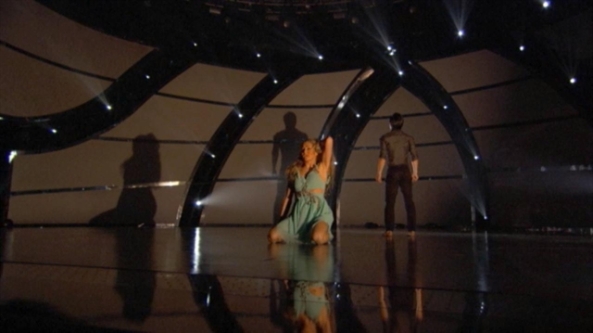It may come as a surprise to some of you that one of my favorite television shows this summer, and in fact for several seasons now, has been “So You Think You Can Dance.”
Yes, as it turns out I am a sorority girl with a love for dance and musicals.
Perhaps it was an initial love of Gene Kelly and “Singin’ in the Rain,” but I typically admired the show for its enormous dance talent and not for its programming. I once had a colleague ask me if I watched the show, to which I said, “I hate the show, but I love the performances.”
Except that too has changed, as “SYTYCD” as a reality show is leaps and bounds better than its counterparts “American Idol” and “Dancing with the Stars.”
Unlike “Idol,” where the judges flat out lie about how the talent pool has gotten better and better each year, “SYTYCD” really does seem to be a show that consistently celebrates quality and continues to find 20 enormously talented and flawless dancers who are impossible to choose between week to week. Each show, they perform breathtaking works of actual art from visionary choreographers as opposed to karaoke covers of pop numbers from a carefully selected songbook.
Unlike “Dancing with the Stars” and “Idol,” “SYTYCD” is about dance instead of celebrity, and try as the show might to reward personality or quality, bad, unmemorable choreography can often land a dancer in the bottom three, if not headed home.
This is complimented by the fact that the show’s judges, Nigel Lythgoe, Mary Murphy and a score of other choreographers and actors from Broadway and Hollywood, often give genuine criticism to their dancers on technique, chemistry and form. They do more than just give preferences or catch phrases about being able to sing the phone book (although Mary Murphy has her fair share of annoying tendencies too).
But why I really love the show is that “So You Think You Can Dance” is possibly the best looking reality show on television.
Here is a show that devotes time to making its enormous stage production and cinematography look cinematic. For the most part, the camera work accompanying each dance routine is planned and choreographed along with the performers. The show achieves emotional close-ups without forgetting the importance of full-bodied medium shots that allow the audience to take in the full range of motion of the dancers. It achieves perspectives and clarity that would not be possible if the cameras were only positioned at the POV of the live studio audience.
The camerawork is so precise, I recall a routine from Season 8 that incorporated a mirror on stage. Even with swivels, close-ups and shots from all angles, it was near impossible to spot a camera in that mirror.
I point again to “Idol” as an example of how not to shoot a reality show. “Idol” sets up three to four cameras, one or two in the center of the stage for close-ups of the performer and one on each side for sweeping crane shots. The camera is so uninspired that the interchanges between them are almost like clockwork. The stage right camera slowly pulls way back until it can go no further, we get a stationary close-up, and then the stage left camera slowly moves forward in the same arc pattern mirrored. This is adjusted based on the speed of the song, and nothing else. Every song looks the same, and only the ungodly colors on the stage backdrop change.
This season, “SYTYCD” experimented with lighting on their stage and the appropriate way to film it to the point that they’ve won Emmys the last two years in a row. One routine with Lindsay and Cole this season saw the camera using subtle low angle shots to emphasize enormous shadows of the two dancers along the walls as though it were a moment out of Fred Astaire’s “Swing Time.”
One complaint I have about the show is that in every episode the show seems to be patting itself on the back. “It’s so wonderful that there is a program like “SYTYCD” to showcase such phenomenal artists week after week,” the judges say, as though dance and the show were some horrible underdog.
And yet, they may be right.
Dance is thriving on TV right now, but it’s been completely brain dead in the movies for decades.
I’m not the first film critic to point out that movie musicals are not what they once were, but it probably has not been done in the context of “So You Think You Can Dance,” so forgive me for my lengthy TV review and for burying my lede after nearly 800 words. Continue reading “So you think you can save musicals?”

